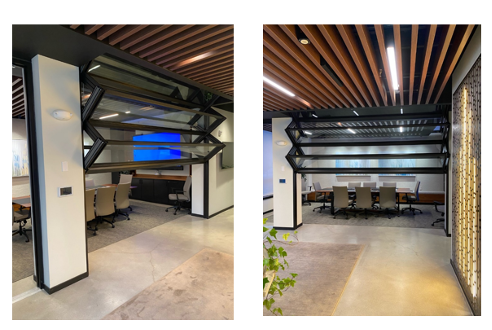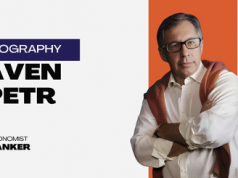THE POST-COVID OFFICE – IT’S ALREADY HERE
By Merrill H. Diamond
Paul Ognibene, the CEO of Cambridge-based Urban Spaces, is known as a developer who can “see around corners.” Indeed, the company’s work evidences a vision that is bifurcated between what is needed today and what will be necessary and desirable tomorrow. From first-of-a-kind multifamily homeownership in downtown Salem, Massachusetts to the largest microunit development in the country right here in Boston, Ognibene’s views and work have been the harbinger of several important urban trends. Yet, it’s Urban’s own headquarters that has emerged as another “bell cow,” leading the way for the design of the 21st century office, while incorporating certain lessons learned from the pandemic.
One of the first things that strikes the visitor to the new headquarters of Urban Spaces is its setting behind the mid-rise buildings along the First Street Corridor in Cambridge. The energy of that recent commercial spine is in no small part the result of Urban’s transformational work in the area. Over the years, CEO Paul Ognibene and his team have assembled an array of adjacent parcels, which are being developed into a series of buildings that have led the way for other developers to follow suit. In fact, the Cambrideside Galleria Mall has recently rebranded as CambridgeSide and embarked on a massive renovation of the former Sears store and other retail spaces.
But it’s not just the transformation of the streetscape which captures the attention of a visitor to Urban Spaces. The entry leads to a lobby, but not a lobby like most others. Set off by an illuminated logo wall, the space eschews the typical images of completed development projects. Instead, Ognibene decided to create a boutique art gallery that derives much of its color and texture from rotating pieces of artwork provided by art consultant, Suzi Hlavacek, who also sourced the striking artistic glass mural within the common areas of the rest of the office building, 121 First Street, which houses CarGurus and Urban Spaces.
To the left of the lobby is the primary conference room. Like many contemporary offices, the conference room is replete with state-of-the-art technological features for meeting presentations and teleconferencing. However, the similarity with other offices ends there as the wall separating the conference room from the lobby is actually a folding glass wall! While providing privacy when closed, it opens into itself at the touch of a button, creating a large open space to accommodate larger groups for presentations, meetings, and of course, the occasional office party.
Walk to the right and one can immediately grasp the central organizational theme that demonstrates the vision of Paul Ognibene and the 21st Century Office. To one’s right and left are offices of the Urban Spaces team. Nothing unusual there aside from the continuation of the palette of artwork seen in the lobby. No, it’s the space in between the offices that makes this the office of the future. Recognizing that work is both private and collaborative, the central spine between the offices includes a number of spaces that differ in size and character. For example, an oversized high table provides a flex-space for team collaboration; restaurant-style booth seating creates a small gathering place for quieter conversation; and an open kitchen with counter seating brings energy that enlivens the entire office.
The new home of Urban Spaces mirrors the person who designed it. Paul Ognibene is less interested in impressing visitors to Urban Spaces than in providing the people with whom he works a stimulating venue that invites creativity and collaboration for ideas. It is not an office that needs to be redesigned according to current trends but, instead, has an almost timeless quality that caters to the needs of the core group of folks who work at Urban Spaces and their guests.






